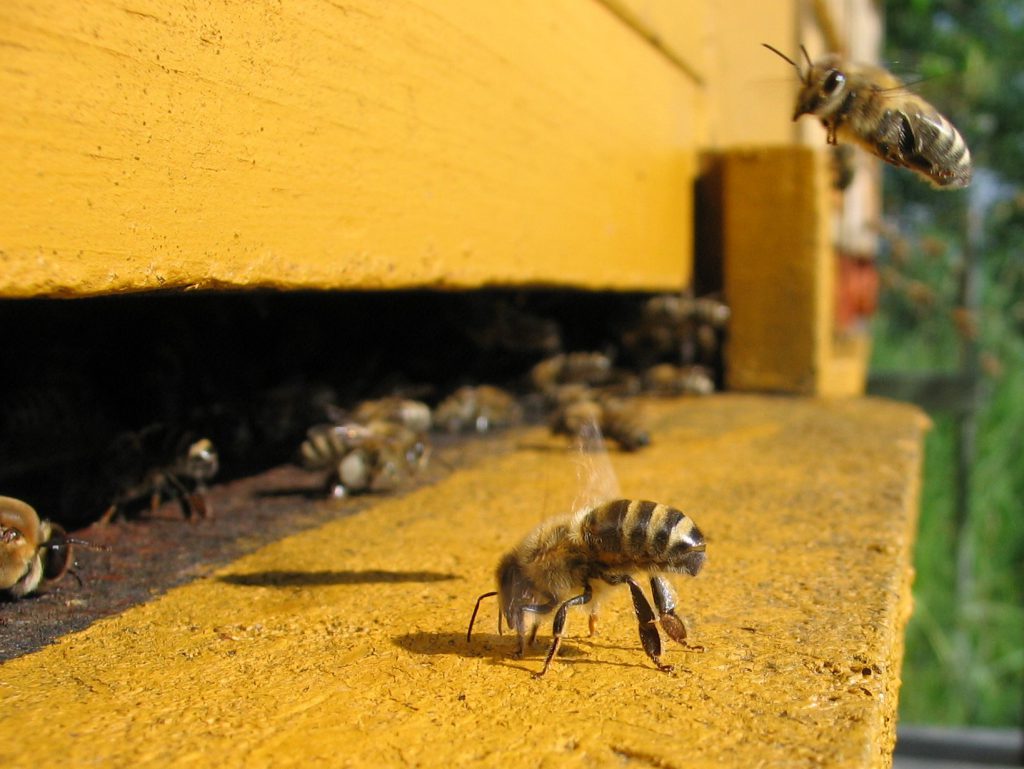
By Oliver Milman
This story was originally published by The Guardian
Mike Potts was aware he was at risk of being a victim of crime, he just didn’t think it would happen to him. But Potts is an owner of an increasingly valuable commodity that thieves are targeting with growing sophistication in the US: bees.
A booming demand for honeybees for pollination drew Potts, owner of Pottsy’s Pollination in Oregon, to load 400 hives of his bees on trucks and drive them down to California’s agricultural heartland last month. He unloaded them to a holding area just outside Yuba City and returned just a few days later to find 92 hives had been whisked away by thieves.
“I pulled in the yard and noticed that there was some stuff missing,” said Potts, who estimated the theft cost him $44,000. Police subsequently pulled over three suspicious beekeepers traveling late at night, to no avail. “I’ve heard that there had been some stealing but didn’t think it would happen to me. It’s frustrating because it’s getting harder and harder to keep bees alive. And then you transport them down and they just get taken.”
The theft is the latest in a string of beehive heists, often undertaken at the dead of night using forklifts and trucks. Hives are regularly split open or dismantled, interventions that can kill tens of thousands of the kidnapped bees. The problem has become severe enough in California that certain police officers now specialize in hive crime.
“Hive theft has always been an issue but it has definitely increased over the last eight years,” said Rowdy Freeman, a Butte county police officer who is commonly referred to as “bee theft detective.” Freeman has compiled figures showing there was an explosion in California hive thefts in 2016, with 1,695 being taken, compared with 101 in 2015. In 2017, the figure was 1,048 hives.
“The number fluctuates but it is definitely something that will continue and that will require resources and advancements in the use of technology to help prevent and deter theft.”
The center of beehive thefts is California’s Central Valley, a fertile stretch of agricultural land responsible for about a quarter of all the produce grown in the US. This huge output—of lettuce, grapes, lemons, apricots and more—requires pollination from far more bees than naturally live in the area.
The main driver of the demand for honeybees is the almond industry, which has doubled in size over the past two decades. There are currently 1.17m acres of almonds in California that require pollination which, at a standard rate of two beehives an acre, means the industry somehow needs to conjure up 2.34m beehives for a short window of time each February, when almond trees start to blossom.
Beekeepers from across the US congregate in the Central Valley in a sort of annual almond jamboree; more than two-thirds of the nation’s commercially managed honeybees sent on trucks to a 50-mile-wide strip of fertile land. Unlike native, wild bees like bumblebees, honeybees are carefully marshaled in hives and are now more valuable as contract pollination workers than as honey producers.
Read more on the Mother Jones website


